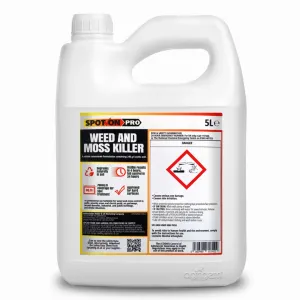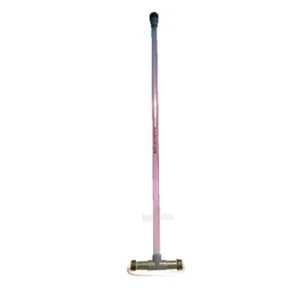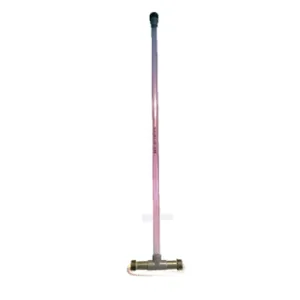When our vegetable plants are in the early stages of growth, it’s easy to spot weeds and pull them out. Job done. But depending on the scale of your veg beds, this might not be viable or physically possible without trampling precious plants.
A long hoe might do the trick of course, but for tougher, deeper-rooted weeds like dandelion, you may find a hoe will break a weed off at the stem - letting it grow again.
Don’t risk spray drift
An organic weedkilling spray will feel a little haphazard and risky around vegetable plants. Most commonly available organic weedkillers are non-selective, and any over-spray will kill your crops as well as the weeds. The same goes for homemade treatments like vinegar and salt.
Unless you are super accurate with your spraying and can guarantee the wind won’t get up, a weedkilling spray is unlikely to be successful. So, what to do?
Letting weeds grow a little bigger can help in identifying them and make the job of pulling them out a little easier. But by the time they’ve grown alongside your salad crops, they’ve competed for nutrients and may have left the soil depleted – reducing the quality of your edible plants.
This is especially important in the first six weeks after sowing or transplanting young vegetable and salad crops, when young plants will suffer from competition for nutrients.
If you leave weeds to grow for too long, you also run the risk of weeds flowering and going to seed – then spreading the problem.
Targeted control with weed wiper sticks
The answer lies in weed wiper sticks, which together with a good organic weedkiller will give you the accuracy you need to target weeds without any risk of harm to your surrounding crops.
Weed wiper sticks are light and easy to use. They allow for super-accurate application, minimising waste and delivering cost-effective weed control.

For organic gardening, choose a non-glyphosate weedkiller like Finalsan to use with your weed stick. Finalsan is an effective herbicide that uses Pelargonic fatty acid as its active ingredient. It is fully biodegradable in plants and soil.
Pelargonic acid works by destroying the cell walls of leaves. It is effective on a range of weeds, lichen, algae and moss, and works quickly giving you visible results within hours. It is safe to use around vegetables and salad crops.
Take a look at our guide to using weed wipers for more detailed information and choose from straight or angled wiper sticks depending on intended use.
Practical prevention
Preventative techniques will stop weeds from appearing in the first place. Landscape fabric or mulch will stop weeds from appearing, but if they have already got hold, place new mulch on top of existing weeds to block out the light which will help kill them.
Water carefully or use drip irrigation so you are directing water to your crops and not the bare earth between rows of vegetables.
Strategic planting using crops that form dense ground cover can also help prevent weeds from taking hold.
For specialist advice about killing weeds among edible plants, please get in touch with our Tech Team.









